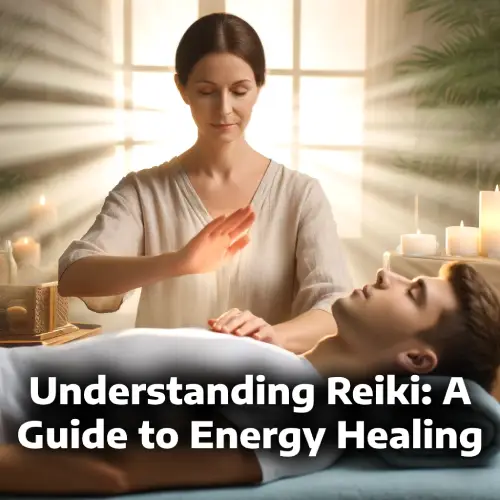
Understanding Reiki: A Guide to Energy Healing
Written by: Ari PlencDate: 12.02.2024
Tags:
Reiki Health Benefits
Reiki
Reiki is a form of energy healing that originated in Japan in the early 20th century. The word "Reiki" is derived from the Japanese words "rei" (universal) and "ki" (life energy). Reiki practitioners believe in a universal life force energy that flows through all living beings. Disruptions or blockages in this energy flow can lead to physical, emotional, and spiritual imbalances. Reiki aims to restore this energy flow, promoting healing and well-being.
The Principles of Reiki
At the heart of Reiki practice are the Five Reiki Principles or Precepts, which guide practitioners in living a balanced and harmonious life:
- Just for today, I will not be angry.
- Just for today, I will not worry.
- Just for today, I will be grateful.
- Just for today, I will do my work honestly.
- Just for today, I will be kind to every living thing.
These principles encourage positivity, gratitude, honesty, and compassion, fostering a state of inner peace and harmony.
The Reiki Session
During a Reiki session, the practitioner channels universal life force energy through their hands into the recipient's body. The recipient remains fully clothed, lying on a massage table or sitting comfortably. The practitioner's hands are placed on or near the recipient's energy centers or chakras to promote energy flow and healing.
The Benefits of Reiki
- Stress reduction: Reiki promotes deep relaxation and helps alleviate stress.
- Pain management: It can reduce pain and discomfort from various conditions.
- Emotional healing: Reiki supports emotional balance and well-being.
- Improved sleep: Many report better sleep quality after Reiki sessions.
- Enhanced spiritual connection: Deepens the connection to inner self and universal energy.
Reiki Training and Certification
Reiki training is accessible to everyone and is structured in three levels:
- Reiki Level 1 (Shoden): Introduction to Reiki principles, self-healing hand positions, and the first attunement.
- Reiki Level 2 (Okuden): Advanced techniques, distance healing, and the second attunement.
- Reiki Level 3 (Shinpiden): Master/Teacher level, advanced techniques, and attunement to teach and attune others.
Reiki Masters conduct the training, which culminates in certification, allowing individuals to practice and teach Reiki.
Reiki and Scientific Research
While the scientific understanding of Reiki is still developing, research indicates positive effects on pain management, stress reduction, and well-being. Continued studies aim to elucidate its mechanisms and effectiveness further.
Incorporating Reiki into Daily Life
Reiki can be integrated into daily activities for self-healing and supporting others:
- Self-Reiki: Regular self-practice to maintain energy balance.
- Reiki for Others: Sharing Reiki with family, pets, or plants to enhance their well-being.
- Reiki in Daily Activities: Infusing daily tasks like cooking and gardening with Reiki energy for mindfulness and enhanced energy quality.
- Reiki for Intention Setting: Using Reiki energy during intention setting to align energy with goals and support their realization.
Conclusion
Reiki offers a gentle, non-invasive path to holistic healing and well-being, aligning with the principles of alternative medicine. Whether practiced alone or with other therapies, Reiki provides a profound way to connect with the universal life force and promote balance and harmony in life.




